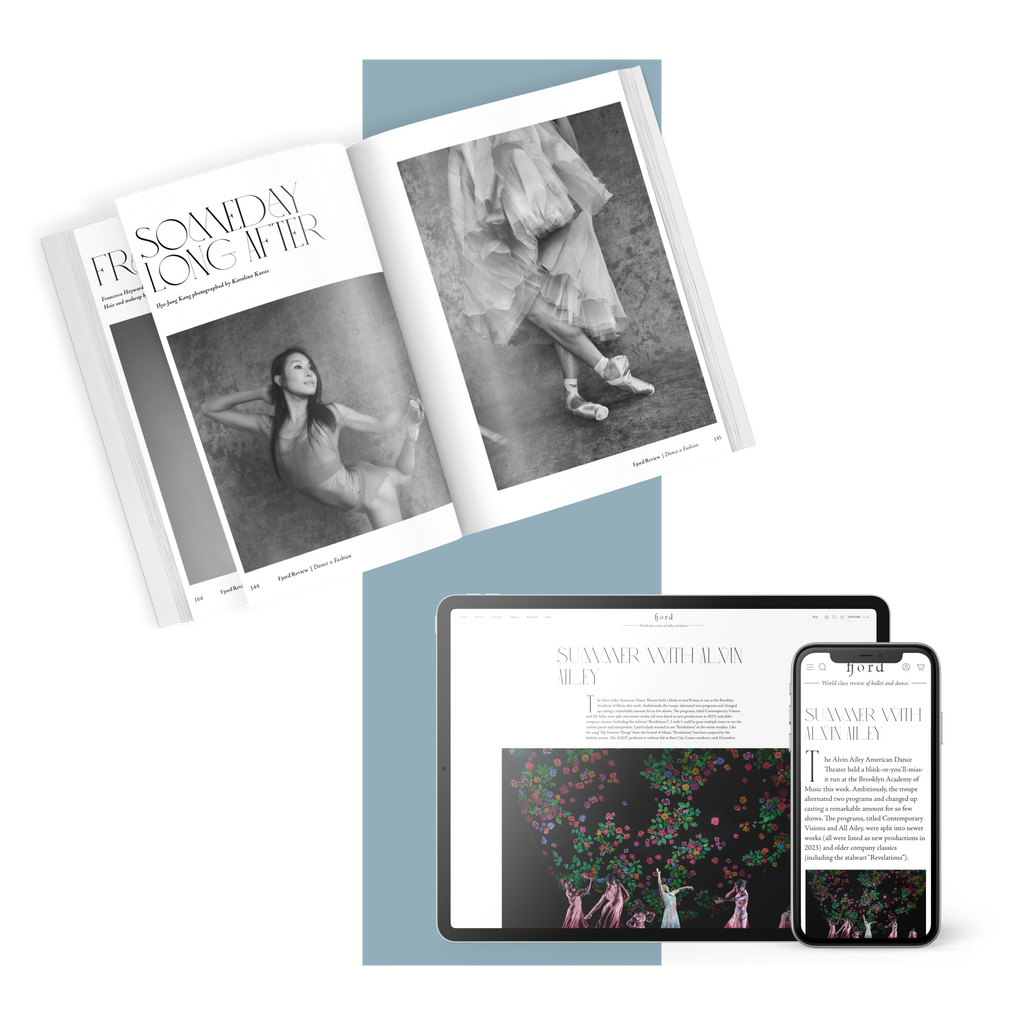Ultimate Release
Perhaps not since Mikhail Fokine’s 1905 iconic “The Dying Swan” has there been as haunting a solo dance depiction of avian death as Aakash Odedra Company’s “Songs of the Bulbul” (2024).
Continue Reading
World-class review of ballet and dance.
Rambert’s latest bill, “Love, Art & Rock’n’Roll,” features works from three different choreographers, each corresponding to one of the titular motifs. There’s a fair bit of thematic crossover between Didy Veldman’s ‘art’ offering (“The 3 Dancers,” debuted earlier this autumn) and Kim Brandstrup’s ‘love’ (“Transfigured Night,” here receiving its London premiere): both are earnest in tone and romantic in subject—an intersection that somewhat sequesters Christopher Bruce’s jaunty 1991 Rolling Stones tribute, “Rooster” (in its final performance here). Thematic incongruity aside, the picks gave rise to some stellar opening night performances, with company favourites Dane Hurst and Miguel Altunaga shining particularly brightly—a testament to each one’s technical virtuosity and artistic versatility.
Performance
Place
Words

Brenda Lee Grech, Daniel Davidson and Miguel Altunaga in Didy Veldman's“The Three Dancers.” Photograph by Tristram Kenton


“Uncommonly intelligent, substantial coverage.”
Your weekly source for world-class dance reviews, interviews, articles, and more.
Already a paid subscriber? Login
Perhaps not since Mikhail Fokine’s 1905 iconic “The Dying Swan” has there been as haunting a solo dance depiction of avian death as Aakash Odedra Company’s “Songs of the Bulbul” (2024).
Continue ReadingDance, at its best, captures nuance particularly well, allowing us to feel deeply and purely. In its wordlessness, it places a primal reliance on movement and embodied knowledge as communication all its own. It can speak directly from the body to the heart, bypassing the brain’s drive to “make sense of.”
Continue Reading“Racines”—meaning roots—stands as the counterbalance to “Giselle,” the two ballets opening the Paris Opera Ballet’s season this year.
Continue Reading“Giselle” is a ballet cut in two: day and night, the earth of peasants and vine workers set against the pale netherworld of the Wilis, spirits of young women betrayed in love. Between these two realms opens a tragic dramatic fracture—the spectacular and disheartening death of Giselle.
Continue Reading
comments